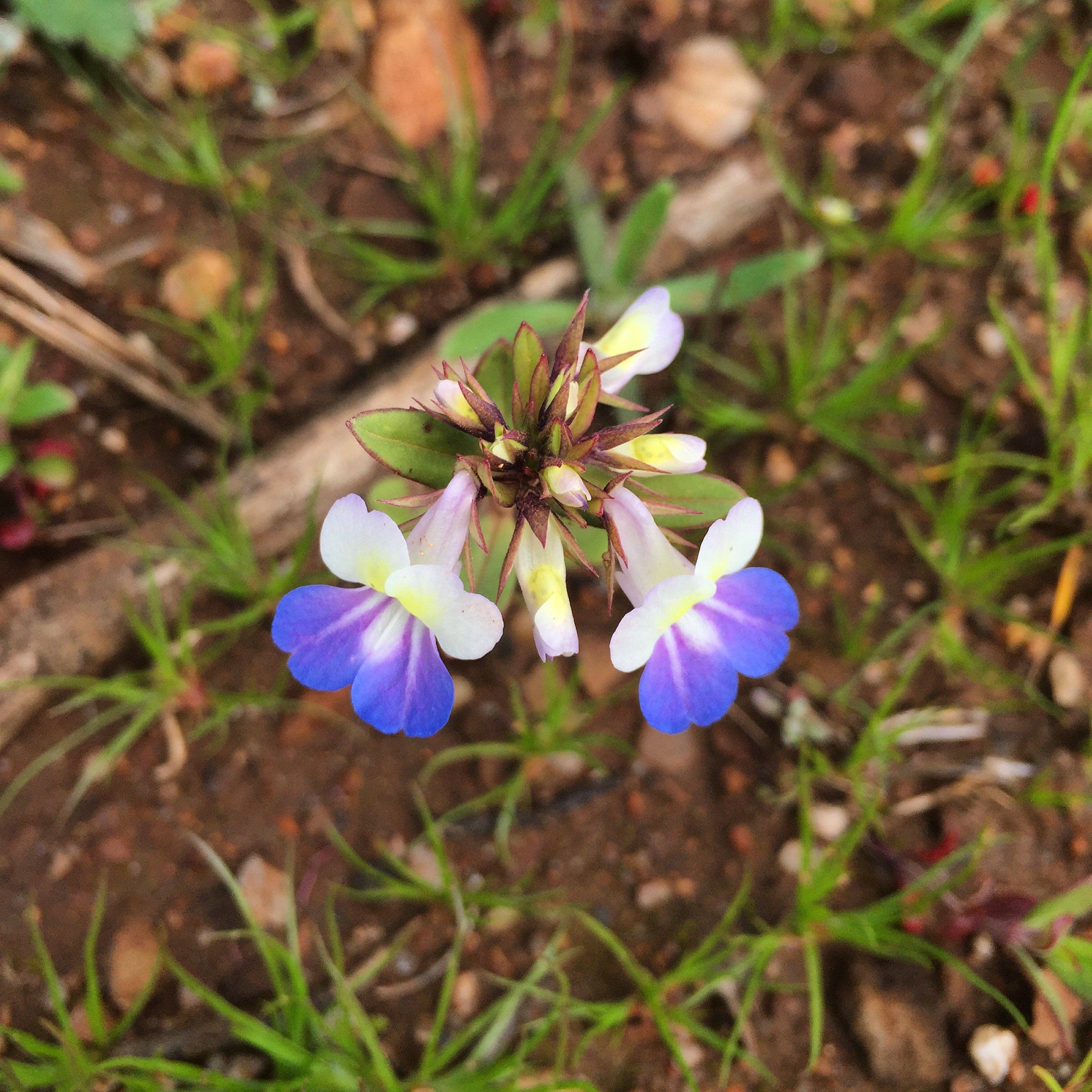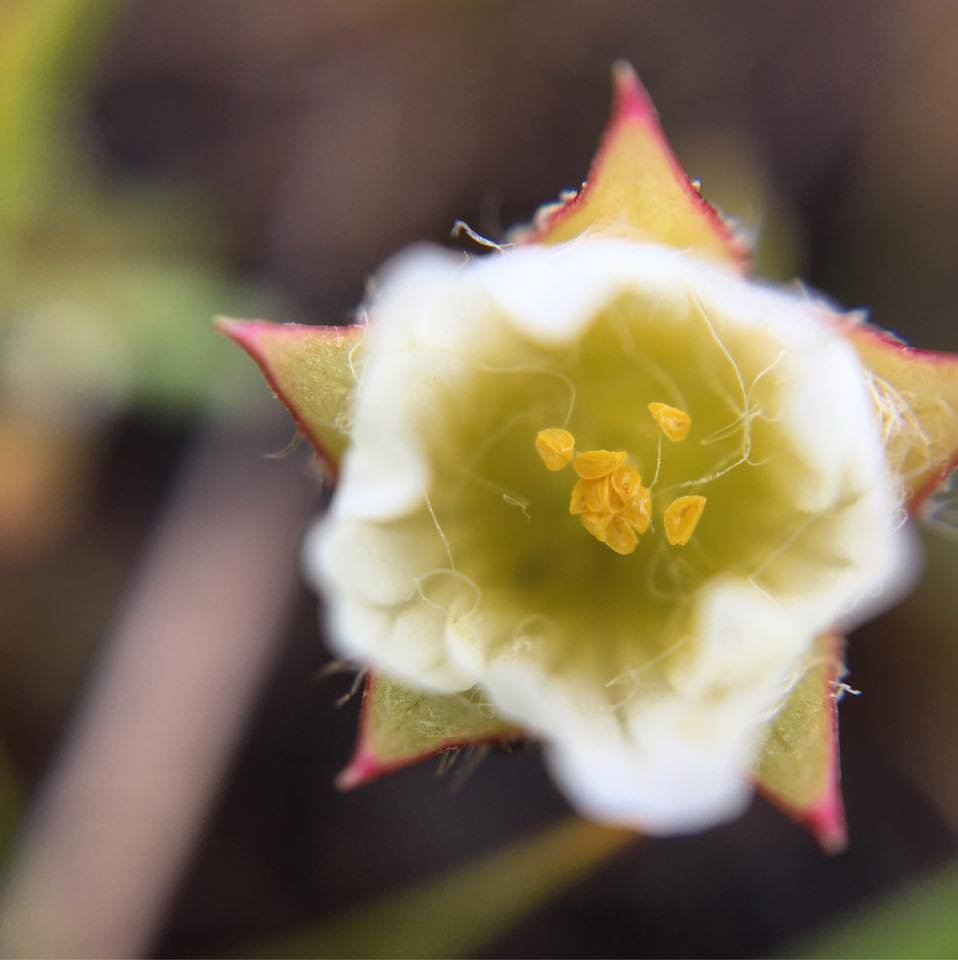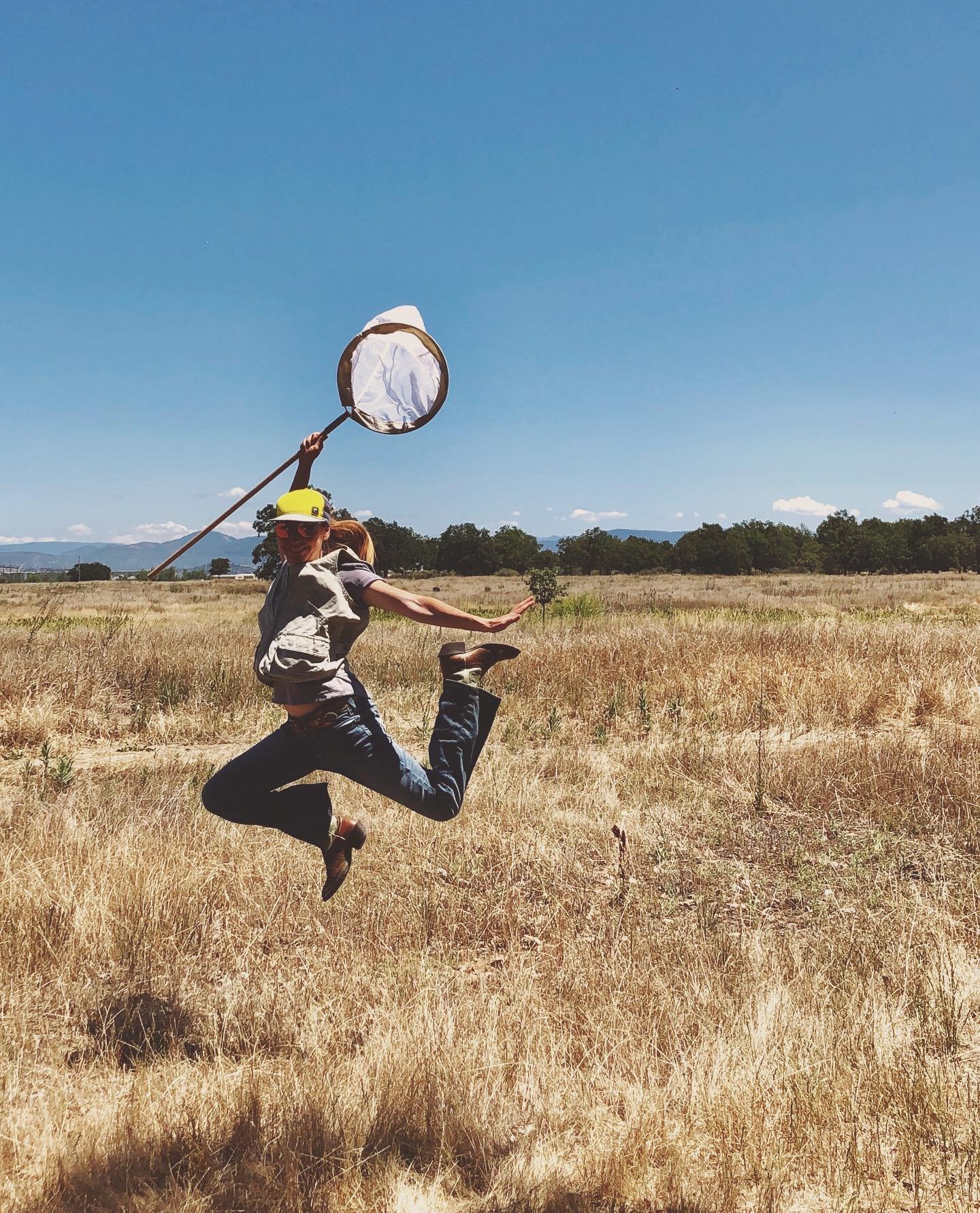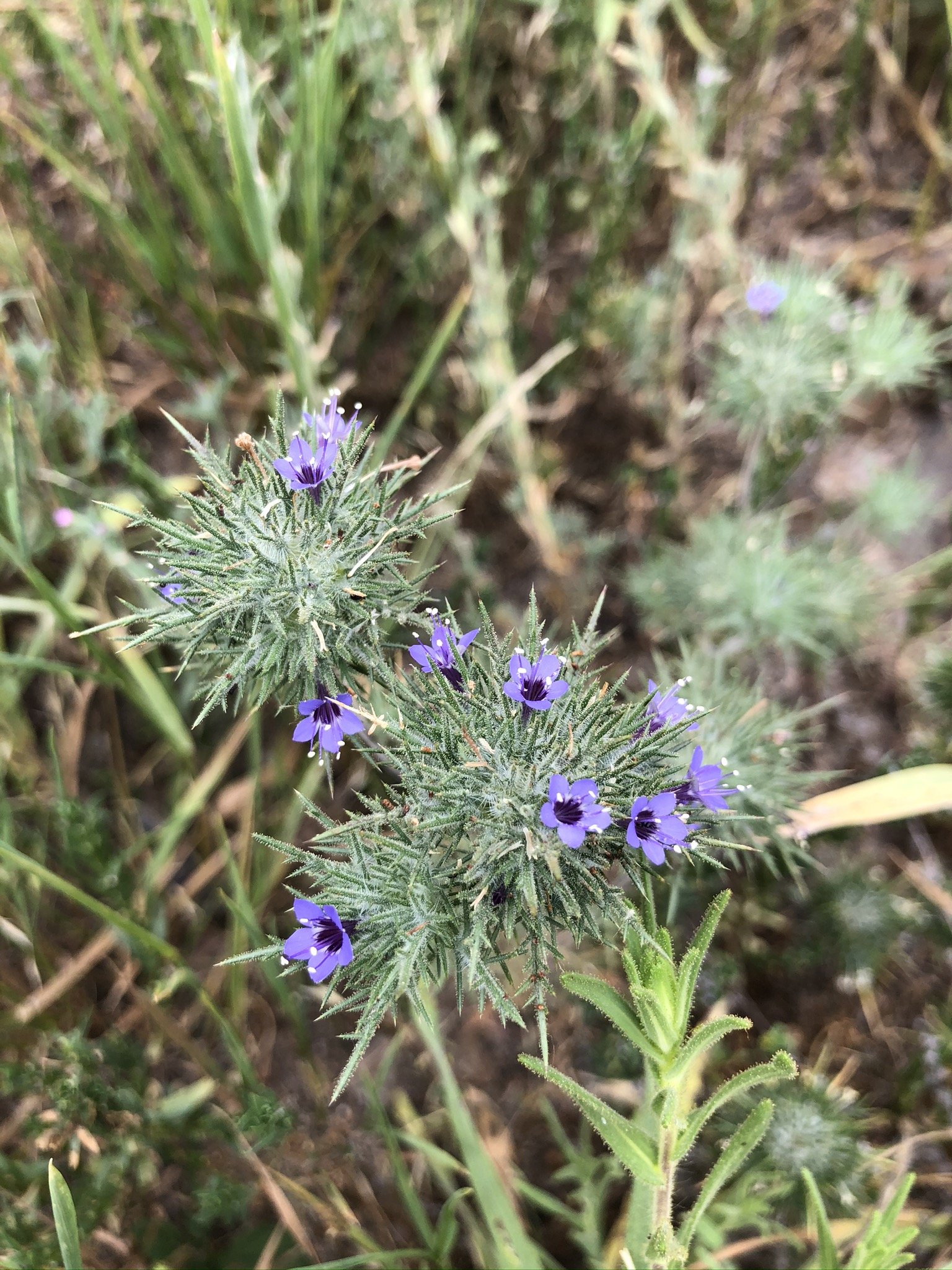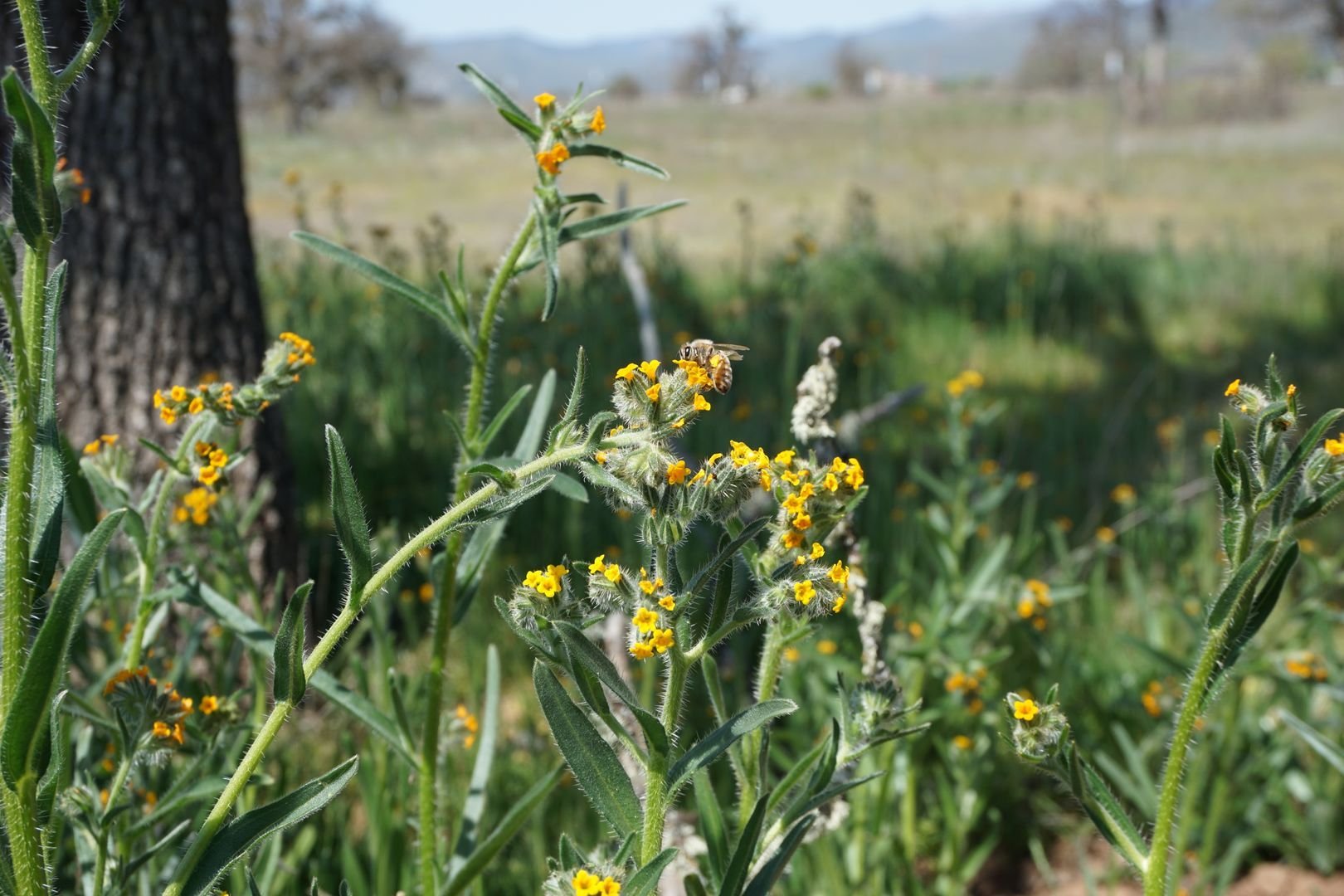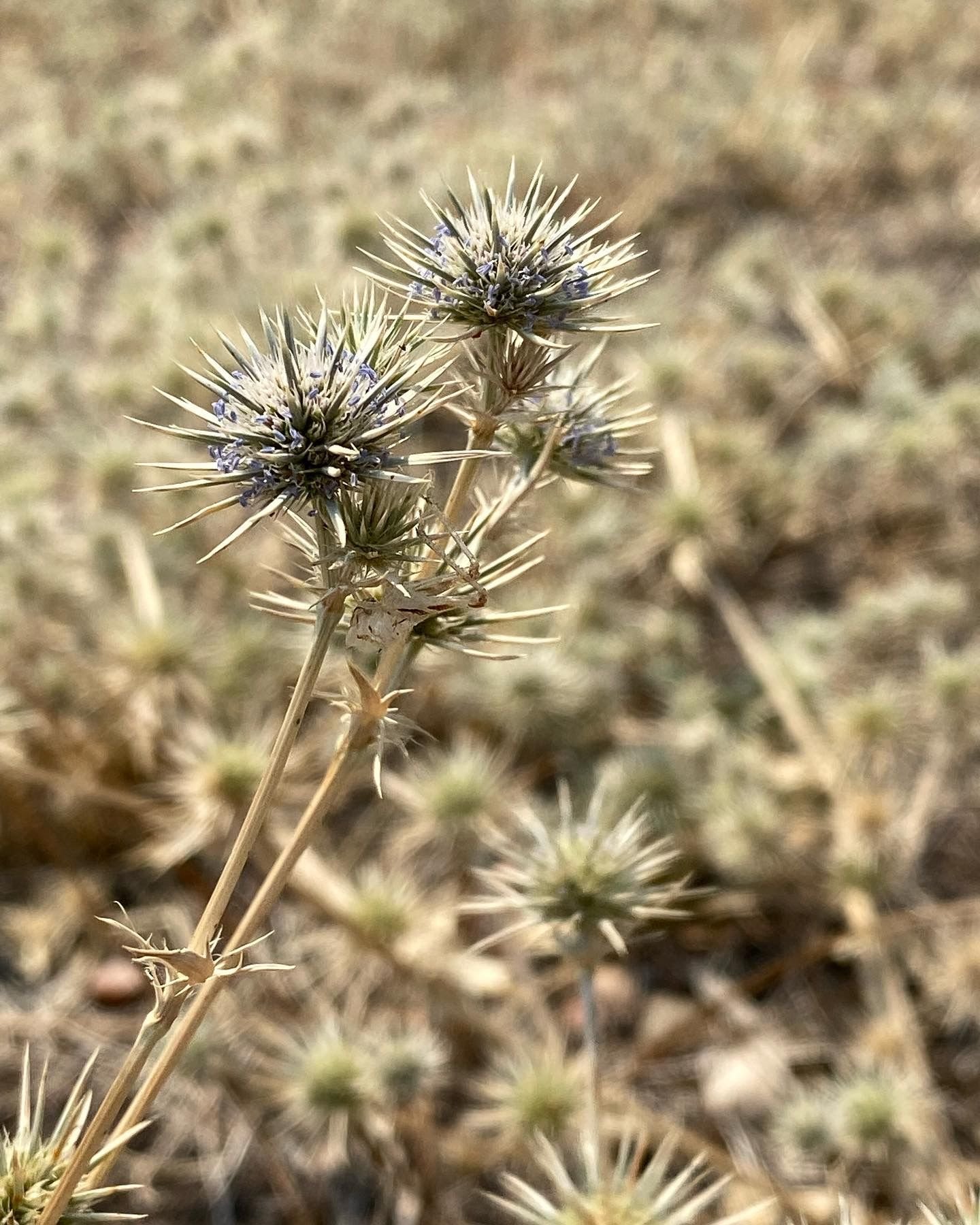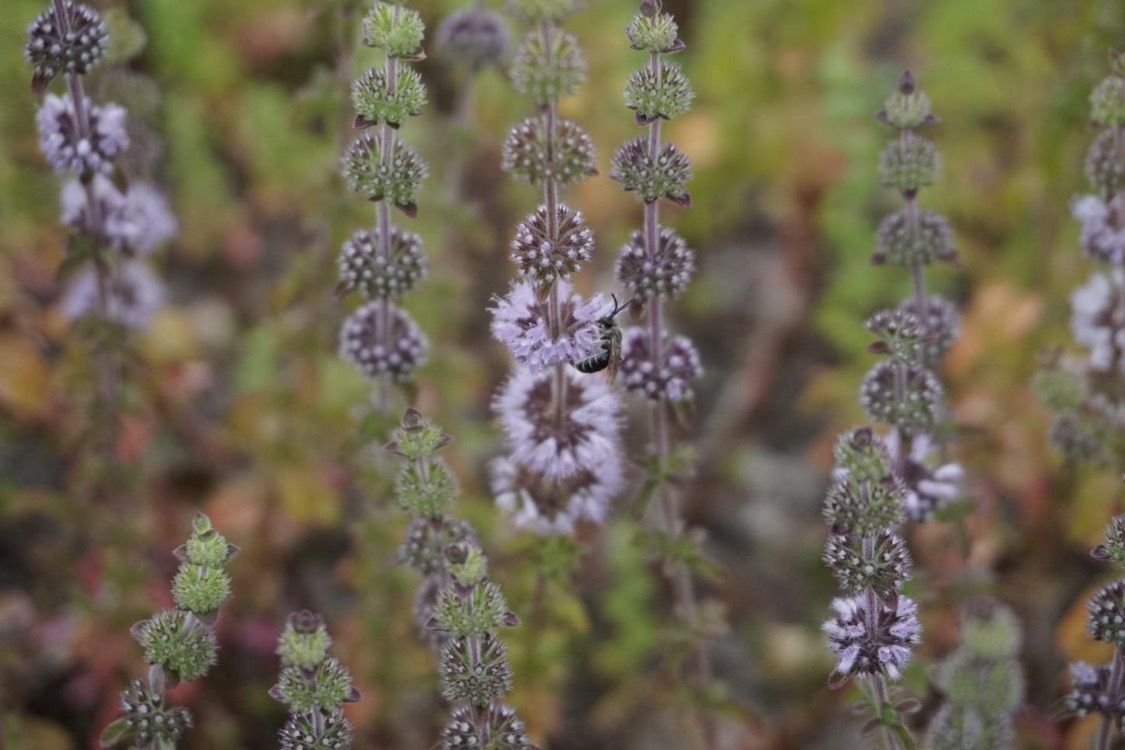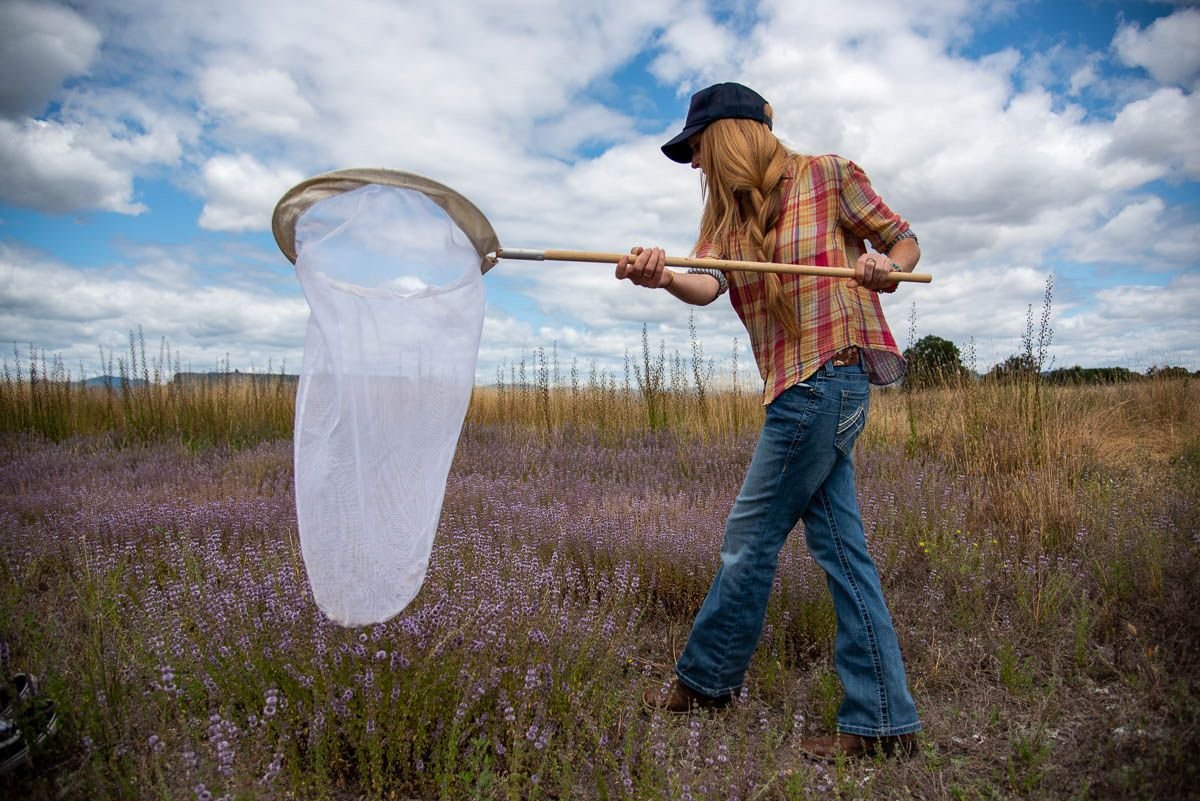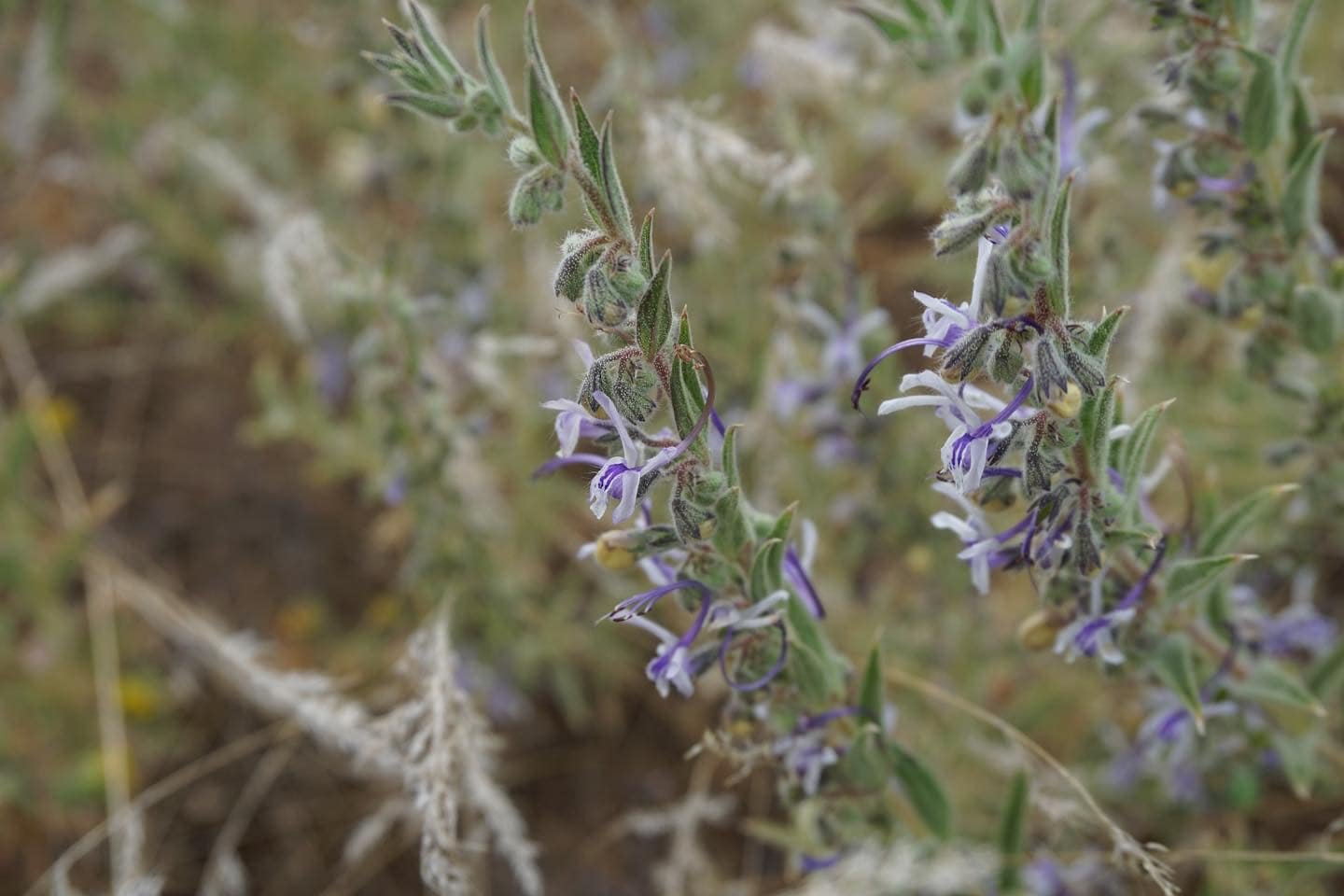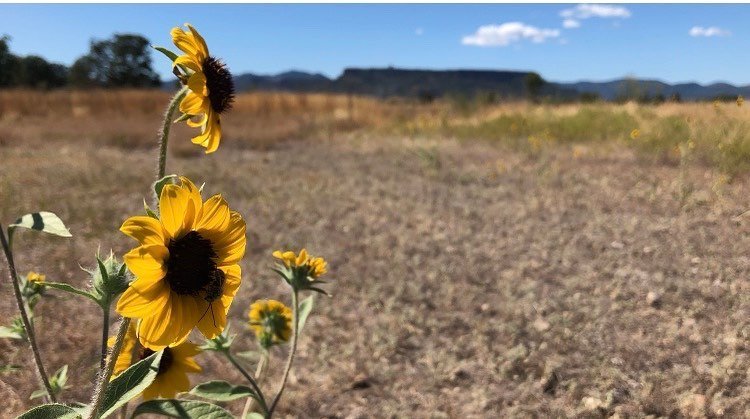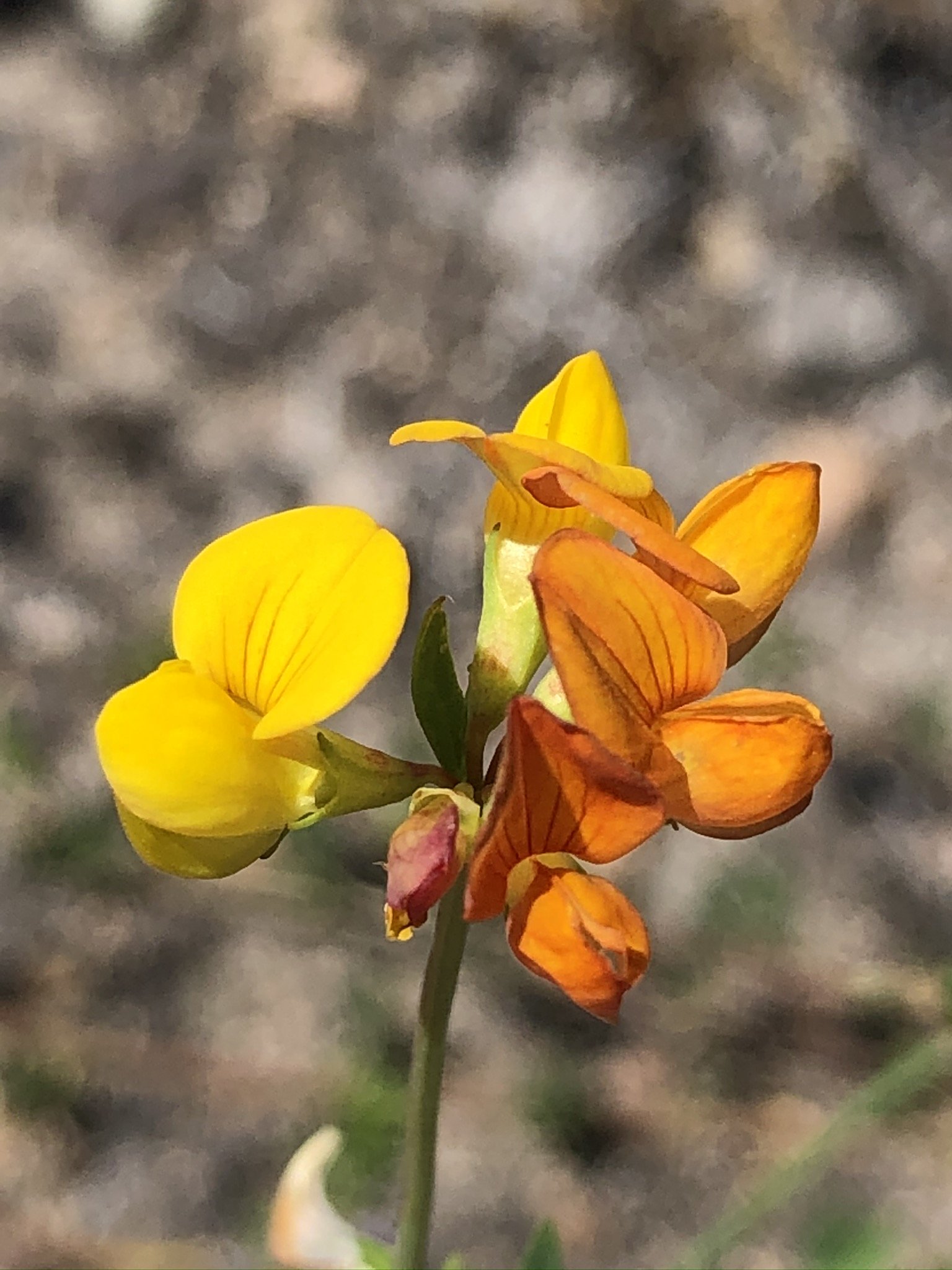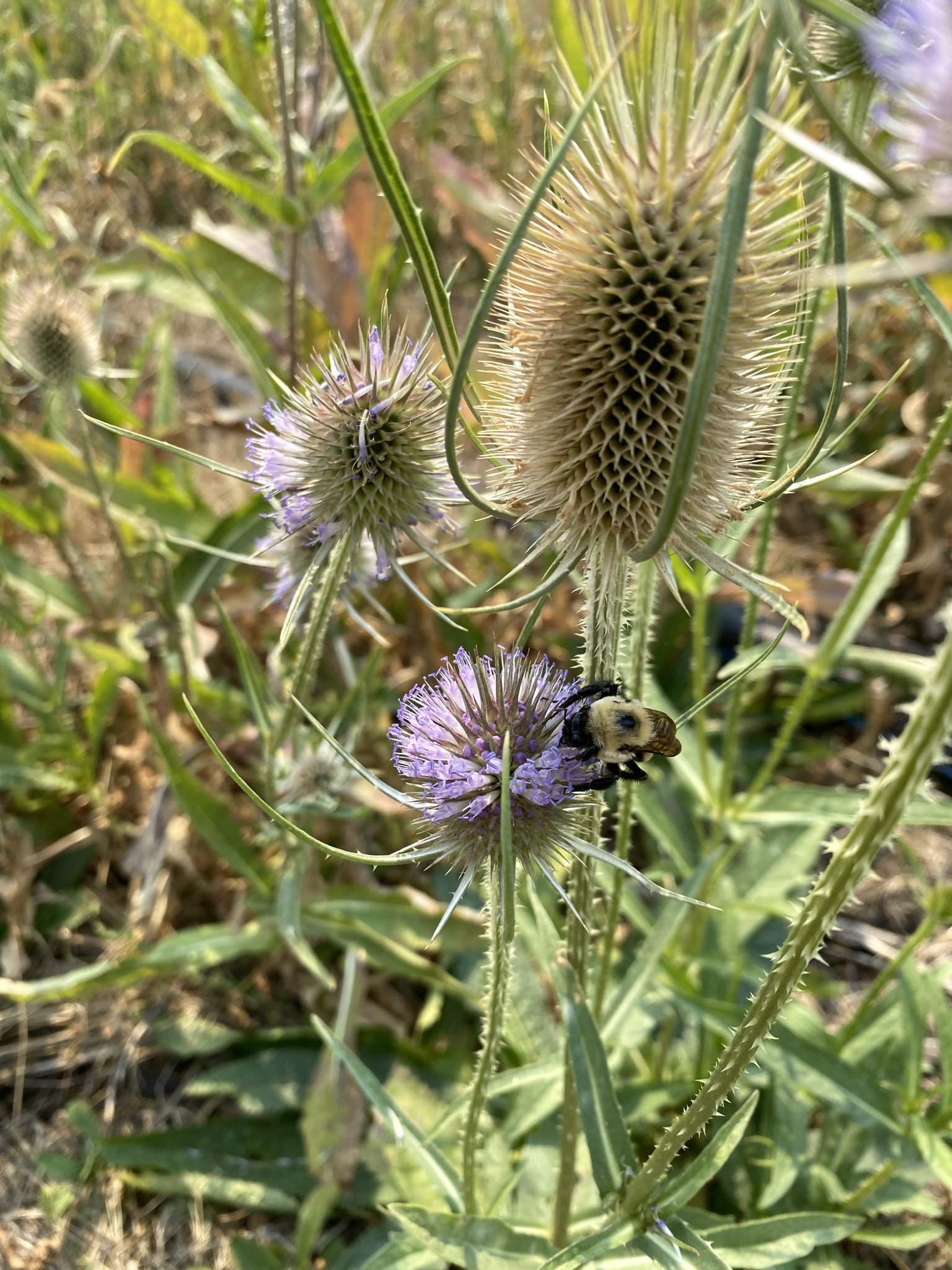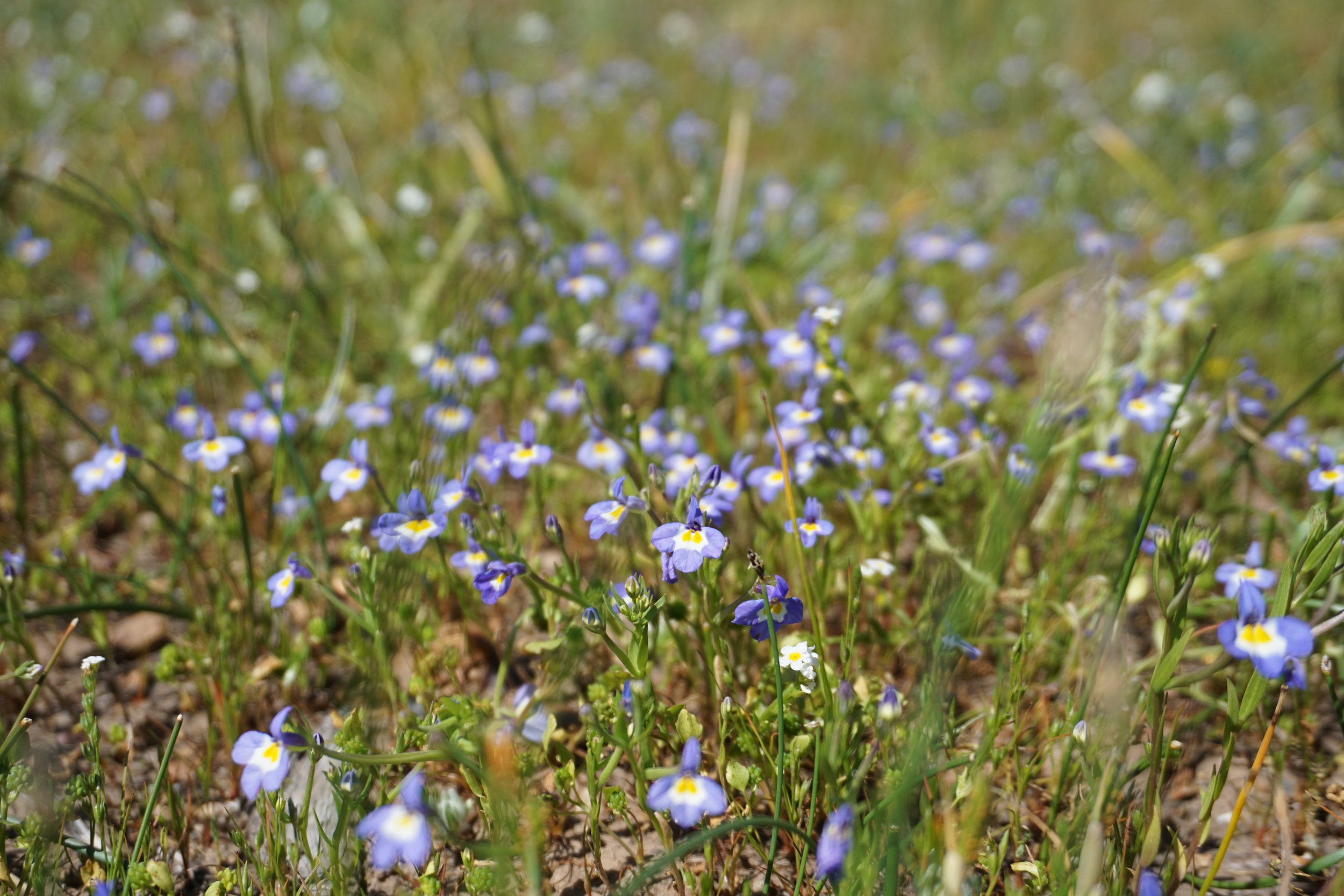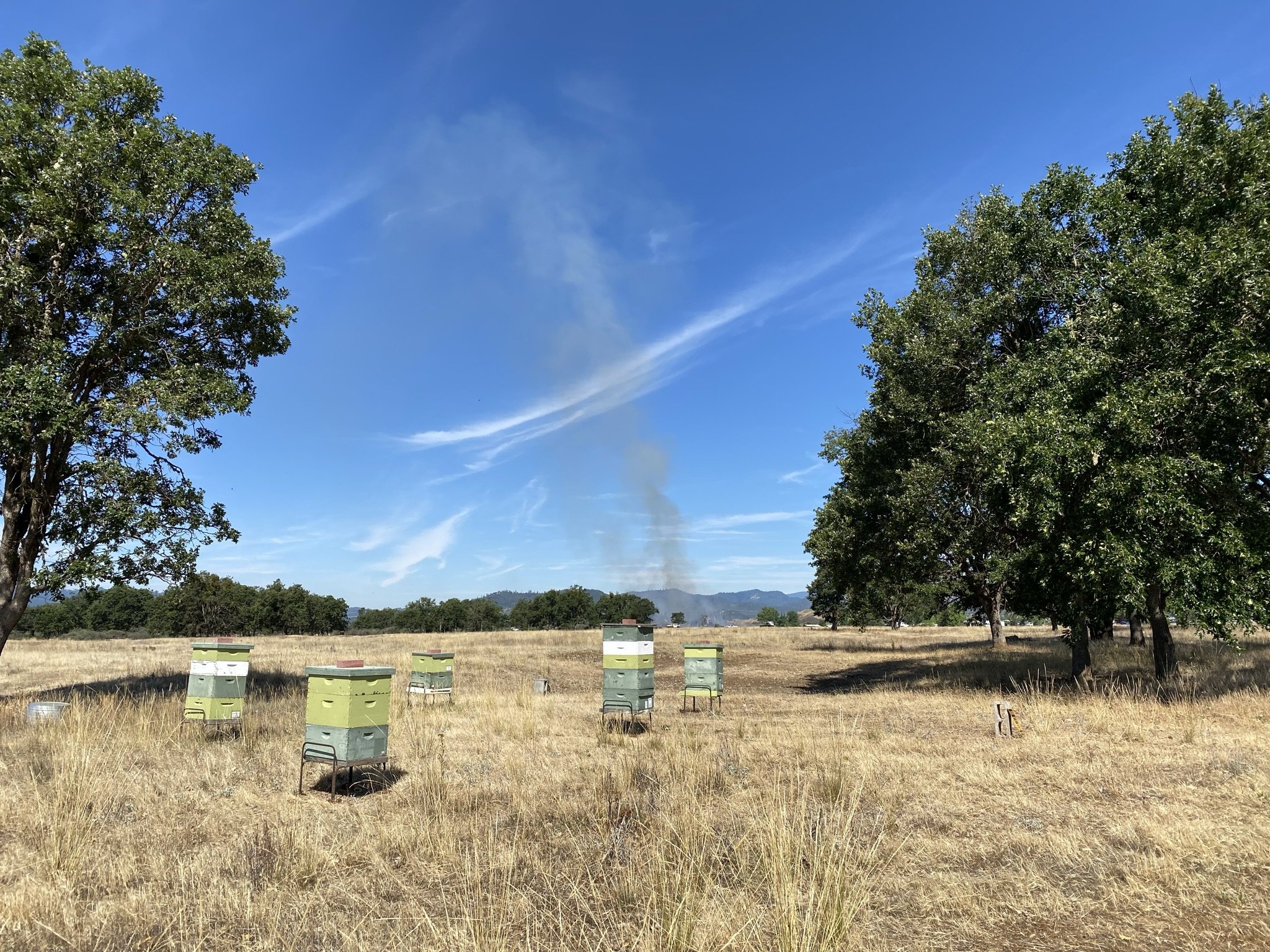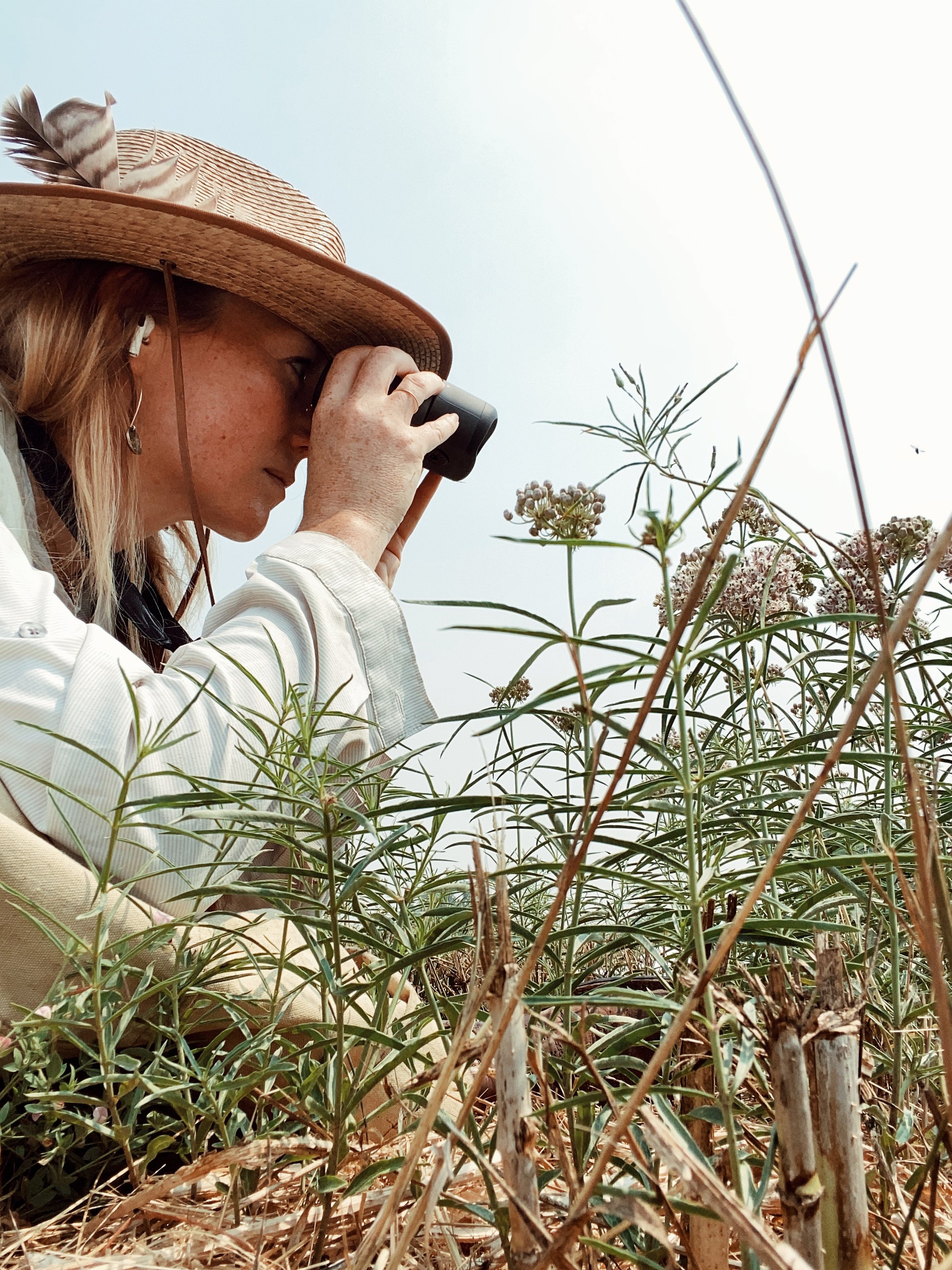BGO's Top 10 Favorite Whetstone Savanna Flowers
HAPPY SPRING!! This is the time of year when Southern Oregon’s vernal pools explode with life. I’ve worked out on the Whetstone Savanna Vernal Pool Restoration project for the last five years observing bees and their flowers; watching, listening, and telling their stories as I go.
This year BGO will be stepping away from the pools to spend more of our time and resources doing bee habitat work on working agricultural lands.
Though the vernal pool project is a restored 200-acre ranch, the land isn’t currently in ag production. That being said, it has (and continues to be) a great inspiration to myself and the team at BGO to show us the potential of restoration on ag lands, and the power of work with nature. This property’s resilience in the face of drought, heatwaves, and dense wildfire smoke never ceases to amaze me. The health of the honey bees I have kept on this project and the resistance to pests, pesticides, disease, and starvation is nothing short of amazing compared to my other Southern Oregon apiaries. Also, the native bee population continues to rebound and boom in both sheer population numbers and species diversity year after year.
As the bees on this site thrive, so to do their flowers (of course!!).
To celebrate our time on the project – I want to share my “Top 10” favorite flowers of the Whetstone Savanna Vernal Pools with you. Many of these are visible from the Table Rocks trails (near Medford, Oregon) and I’ve seen quite a few of them in other parts of Oregon and Northern California. So, keep an eye out for these flowers and their bees, and if you’re a land owner and happen to see them – please embrace them as important wildflowers, not weeds.
Thank you for five great years of collaboration ODOT and The Nature Conservancy and thank you to the BGO worker bees who have helped to collect, sort, and analyze data upon data upon data: Marie Martin, Annika Bowman, Mackenzie Brubaker, Christy VanRooyen, Andy Cullison, Stephani Gimble, & Mariah Moser. Also thank you to the Oregon Bee Project’s “Bee Atlas” for your support and training along the way 🐝
If you would like to learn more about this project, check out the talk I gave for the Siskiyou Chapter Native Plant Society of Oregon here.
To support our next phase of work, please donate to our BGO Mobile Research & Education Unit capital campaign! GloryBee’s “SAVE the BEE” foundation is matching donations in April, up to $5,000!!
If you would like to keep learning more about the wide world of bees and their flowers (going bee-yond our dear honey bees) check out my favorite Insta pages @thepackerlab @beesearcher @usgsbiml and the PolliNation and 2Million Blossoms podcasts. And while this is the finale of our work at the vernal pools, there will be plenty to share on the bees and flowers of our upcoming collaborative projects. Stay in the inner circle by continuing to follow our adventures on social media and by signing up for our newsletter here.
1. Collinsia grandiflora (common names: Chinese pagoda, large-flowered blue-eyed Mary) is an annual freshwater-loving herb and is one of about 20 Collinsia species that thrive in Oregon, California and bee-yond. It is one of the first flowers to pop up at the Whetstone Savanna vernal pools. It’s was one of the first species to really take hold after the earth-moving part of the restoration. I love this flower because it’s always covered in newly emerged queen bumble bees (Bombus) in the spring. The bright orange pollen that comes from these white and violet blossoms will be some of the first food of the season for baby bumbles while their in their larval stage. Other bees that love this early bloomer are honey bees (Apis mellifera), mining bees (Andrena), and sweat bees (Lasioglossum).
2. Limnanthes floccosa ssp. grandiflora (common name: big-flowered wooly meadowfoam) is listed as an endangered species. Ok, I’ll admit it. Before I started working on this project I honestly didn’t think of plants when I thought of “endangered species.” I thought of bees and bears and other such charismatic animals 😬 HOWEVER, Whetstone Savanna is home to not just one, but THREE endangered species. Cook’s lomatium (Lomatium cookii), another lovely spring-time flower, and a wee adorable vernal pool fairy shrimp (Branchinecta lynchi). In the spring of 2021 when the whole rest of the world felt like it was simultaneously falling apart and exploding, there was a superbloom of this precious flower at the pools. I was literally tip toeing around the pools, trying not to step on these flowers, as they were EVERYWHERE!! It was so life-affirming to arrive on site and witness the resilience of nature while I muttered to myself exclamations of amazement at the seasonal surprises in-store for us.
These flowers are the most popular with honey bees (Apis mellifera), though I have seen sweat bees (Lasioglossum) visit them on occasion. The most common visitor is a out-of-this world looking creature called a fuzzy bee fly (Bombylius). Though completely adorable, this fly has a dark side. The female hovers over ground nesting bee tunnels and shoots her eggs into them. When the eggs develop into larvae, they crawl into the bee nest, devour the young, and then hibernate there until next spring!
Ok, back to the plant. A fun fact from the Oregon Department of Agriculture, “A closely related species to Limnanthes floccosa, Limnanthes alba (white meadowfoam), is currently cultivated as a crop plant in the Willamette Valley. Unlike common seed oils, species of the Limnanthes genus produce a very long chain seed oil with novel physical and chemical characteristics, making it extremely stabile at high temperatures and pressures. The only other known naturally-occurring oil with similar qualities is sperm whale oil.”
3. Navarretia (common name: pincusionplant) is small, spikey plant full of sass. There are a number of species of Navarretia on the project site. It was one of the first plants that I learned, as you can’t miss the telltale spikes protruding around it’s delicate little purple, or white, flowers.
Once I forgot my boots and had to monitor the site in flipflops. Once.
Though small - this flower is mighty and feeds bees, and other pollinators, for many months of the season. I’ve seen digger bees (Anthophora), honey bees (Apis mellifera), yellow-faced bees (Hylaeus), sweat bees (Lasioglossum), and long-horned bees (Melissodes) all enjoying the gifts of this little wonder.
Keep an eye out for it in wetlands and near mountain lakes!
4. Speaking of spiky plants – I’m always in awe of the juxtaposition that is Eryngium petiolatum (common name: Oregon coyote thistle ☀️🌿)
From the looks of it from afar (even a couple of feet) this landscape looks dry and dormant in the summer. But no! It blooms and buzzes like crazy. Get a little, well a lot, closer and you'll see there are tiny purple blossoms nestled between the harsh spikes of this plant.
The first thing that hits you is the sweet perfume wafting up from the bed of spikes and filling the air. If purple had a smell, this would be it 💜
Oregon coyote thistle is endemic to our vernal pools, and thrives with fire. In fact, Indigenous people historically used fire in vernal pool landscapes to prevent woody species like coyote brush from taking over - which now threaten coyote thistle along with human encroachment (housing, industry, and ag) and weedy grasses.
The roots are edible and tasty, you can also eat the young shoots, which emerge from the wet pools in spring. You can extract an essential oil from them that has a multitude of medicinal uses ⚕️
All of the stars lined up for this plant in the summer of 2021, and it has its (literal) day in the sun! I hadn’t seen a super bloom of coyote thistle like this since I started observing the project in 2017. It covered the bottom of the swale I'm kneeling in, and had all but replaced the mid-July nectar void that we typically have.
Covering the thistle are bees, bees, and more bees. Sweat bees (Lasioglossum), honey bees (Apis mellifera), bumble bees (Bombus), yellow-faced bees (Hylaeus), long-horned bees (Melissodes), mason bees (Osmia), and a couple of mystery bees that I sent off for ID 🔬
You may be able to observe a similar super bloom and bee boom at the top of Table Rocks! It's worth a try 🤞🏼
Also, this is the tiniest and most adorable bumble bee I've ever seen in my whole life.
5. Amsinckia menziesii (common names: fiddleneck, rancher’s fireweed) is a plant that I see evvveeerrrryyyywhere, so I’m shouting form the rooftops – THIS IS NOT A WEED! It’s a lovely and important native wildflower.
Just who is this flower important to? Butterflies, moths, birds, and of course our bees! I’ve observed NINE different genera on this plant. Specifically: mining bees (Andrena), honey bees (Apis mellifera), bumble bees (Bombus), long-horned bees (Eucera), sweat bees (Halictus & Lasioglossum), yellow-faced bees (Hylaeus), leafcutter bees (Megachile), and mason bees (Osmia).
Many parts of the plant are edible for humans, as well. The Chumash people used the shoots, seeds, and leaves as a staple. The seeds were ground and toasted and used as an ingredient in cereals, baked goods, tortillas, and beverages.
A word of caution, this plant cane be toxic to imported livestock that haven’t evolved with fiddleneck, but they don’t tend to eat it in large quantities unless directly fed in hay or if there is nothing else for them in the pasture. It’s, however, a great plant for building soil organic matter as they grow easily and have thick, juicy stems that feed your soil biology.
6. Plagiobothrys (common name: popcorn flower) is another super plant for pollinators. There are multiple species that bloom at the pools as the water line shrinks. On some years, they will fill up a whole pool with blossoms and the sweet smell that wafts on the warm summer breeze is heavenly, indeed.
Though they get their name from the yellow and white coloring, popcorn flowers * are * edible. You can enjoy the flowers, new leaves, and can roast up the seeds.
The flowers are also popular with a multitude of bees - mining bees (Andrena), honey bees (Apis mellifera), bumble bees (Bombus), small carpenter bees (Ceratina), long-horned bees (Eucera), sweat bees (Halictus & Lasioglossum), yellow-faced bees (Hylaeus), and mason bees (Osmia) can be seen frequenting the blossoms.
7. Mentha pulegium (common name: pennyroyal) aka the Devil’s work!! Heh. Heh. Heh. I know that many of you will boo and hiss at this one, as it is a very aggressive plant that can take over a site. But so far it’s doing a stellar job at the Whetstone Savannah feeding bees and staying in balance with the rest of the plants.
Pennyroyal is native to Europe, North Africa, and the Middle East, where honey bees (Apis mellifera has also evolved). This plant, however, not only feeds honey bees – but just about every other bee on the property. It’s the most attractive plant on the project, feeding 14 genera of bees. Here are the ones I’ve observed, but there are probably more: mining bees (Andrena), carder bees (Anthidium), honey bees (Apis mellifera), leafcutter bees (Ashmeadiella, Megachile, & Heriades), bumble bees (Bombus), sweat bees (Halictus & Lasioglossum), yellow-faced bees (Hylaeus), long-horned bees (Melissodes), mason bees (Osmia), and cuckoo bees (Triepeolus & Xeromelecta).
It's a fascinating plant – with a storied history. I’ll let you do your own research on its ancient and modern gynecological uses, but I’ll tell you a bit about this plant as FOOD!
You’ve probably noticed I get really excited about eating things I find in the wilds. Spending a lot of my growing up years in Southeast Alaska, my family hunted, fished, and foraged a large part of our diet – and wanting to know if I can eat everything that grows out of the ground just seems to be weaved in my DNA.
Anyhoo – this plant was a staple herb in ancient Rome and Greece, and was just as common as oregano and coriander. Today it’s grown out of fashion, but is still an essential ingredient in the North African dish Batata fliou.
If you’ve ever come across this plant, you’ve noticed its sharp minty smell. Recognizing the power of this herb, folks have used it to repel rattlesnakes, fleas, gnats, mosquitos, and all sorts of other pests.
If you decide to harvest it, take caution – it’s EXTREMELY POWERFUL, and doesn’t take much to go from a medicine to a poison.
But I don’t love this plant for it’s herbaceous qualities. I love it because it blooms when most other flowers are dormant and feeds the most diverse array of any other plant on the property. This plant is a great example to show us that nature is complex and managing that complexity is also complex 😉 What is working for us at the vernal pool site may not work other places, but our decisions are data-informed and well thought out, with the site’s bees and other pollinators being of highest concern.
8. One of my * most * favorite vernal pool flowers is Trichostema lanceolatum (common names vinegarweed, camphor weed, or turpentine weed, because of its powerful odor from the plant's natural oils).
This plant loves disturbance, and is thriving on the roads on the project site that gets harrowed every year. It bounces back quickly after fire and is super drought resistant.
While many folks new to the West (where this plant evolved and thrives) aim to eradicate it, due to its scent and sticky oils, Native Americans have long had a relationship with this plant - using it as a cold and fever remedy, a pain reliever, and a flea repellent! ⠀
This plant endlessly fascinates me, as it springs up through the dry, cracked vernal pool clay when nearly everything else is dormant. ⠀
If you are lucky enough to have it on your property, please let it stand! It's an extraordinarily important plant to our pollinators, and attracts a large variety of native bees. ⠀
This plant also seems to have a sense of humor! Have you ever watched a bee land on one? If you have, you'll notice the "trigger pollination" technique of this "nototribic" flower! Nototribic flowers are those that deposit pollen on the upper side of visitors' booties. ⠀
While the bee, or butterfly, is drinking nectar from a cup-like tube, a long, hooked stamen popps down and "boops" the pollinator on the top of her abdomen. Most bees don't seem to notice it's even there until it really builds up, which ensures plenty of pollen makes it to the next flower, and the next...
The bees that love this flower are digger bees (Anthophora), honey bees (Apis mellifera), bumble bees (Bombus), sweat bees (Halictus & Lasioglossum), yellow-faced bees (Hylaeus), and long-horned bees (Melissodes).
9. Helianthus bolanderi (common name: Bolader’s sunflower, serpentine sunflower) just might be my favorite flower on the property (I know, I keep saying that). It’s nickname “serpentine sunflower” came from its love of Southern Oregon and Northern California serpentine soil - a special substrate full of heavy metals: zinc, iron, and copper (where most things won’t grow, but it does turn our rivers stellar shades of azure and jade).
It seems like the tougher it gets outside, the more this plant thrives. It blooms from mid-summer to October – those lovely smokey triple digit months 😉 It’s a true rockstar of the Whetstone Savanna – feeding all sorts of butterflies, moths, and caterpillars (about 30 species of Lepidoptera) as well as digger bees (Anthophora), honey bees (Apis mellifera), bumble bees (Bombus), small carpenter bees (Ceratina), sweat bees (Halictus & Lasioglossum), yellow-faced bees (Hylaeus), leafcutter bees (Megachile), and long-horned bees (Melissodes).
The first time I spotted this flower it was rising up from the gravel road. While the crew had planted the seeds, we think birds must have decimated the first planting, because this was the only flower that seemed to have survived. Though solo, it was not lonely. This plant was covered in an array of bees. Upon making this report, the ODOT team diligently grew out thousands and thousands of seeds at the local US Forest Service nursery (where my mom worked in her 20’s – fun fact!) and densely seeded the property in following years. It’s been a great success, and we often have “superblooms” of this flower when the bees need it most.
You can help in this seeding endeavor!
Though this flower is a total badass, it’s considered rare due to habitat loss.
Visit your local native plant nurseries to pick up a few pots of this flower for your yard! It’s easy to grow, and your pollinators (and myself) will love you for it.
The more “native” your soil, the better this plant will thrive – so please avoid spending time and money on soil amendments and let this beauty surprise you.
9.5 I TOLD YOU I WOULDN’T BE ABLE TO SETTLE ON 10!!!
In short – here are a few other of my favorites (rapid-fire style) 🔥
I love this flower because…
Achillea millefolium (common name: yarrow) … it’s so common and resilient, I’ve heard many folks say it’s a weed. First of all – I don’t believe in weeds. Second! It’s a vastly important native flower that is a stellar host for not just bees, but a wide array of beneficial insects. Propagate this one in your farm and garden to cut down on chemical pest control. Bees: Anthidium, Apis mellifera, Bombus, Ceratina, Halictus, Heriades, Hylaeus, Lasioglossum, Melissodes.
Dowingia yina (common name: Cascade calico-flower) … this was one of the first flowers I got to know on the project. It loves disturbance and would completely fill the pool bottoms after the water subsided. In later years, it lives it’s best life in the roads that are harrowed on the site. It’s host to one of my favorite bees on the site, mason bees (Osmia) which were one of the first native bees I leaned, as well. Look for it coming up soon at the Table Rocks! Bees: Andrena, Apis mellifera, Bombus, Halictus, Heriades, Hylaeus, Lasioglossum, Osmia.
Dipsacus (common name: teasle) … It supports our bumble bees when drought and heat waves scorch just about everything else on the project. This is another one that can get a bit wild, but is actively managed on the property to protect neighboring plants and bees. Bees: Bombus, Melissodes.
Lotus corniculatus (common name: bird's-foot trefoil) … this is one of my favorite pasture plants, so I just love seeing it here – thriving in soggy tire ruts, building soil, and feeing bees. Bees: Anthidium, Apis mellifera, Ashmeadiella, Eucera, Halictus, Hylaeus, Osmia.
10. Asclepias fascicularis (common names: narrow-leaf milkweed, Mexican whorled milkweed) is the most important local plant you can have in your garden for Monarch butterflies, Danaus plexippus. This plant will get eaten alive by Monarch caterpillars, and PLEASE LET THEM DO IT! It’s totally natural and the plant loves it.
This plant may host aphids. If you feel they are causing damage to the plant, please do not spray anything on the plant or in the soil that will kill the aphids – instead, invest in ladybug habitat (phacelia, birds foot trefoil (my personal faves) and yarrow, tansy, coreopsis and cosmos.)
OR – just squish them with your fingers! Easy peasy lemon squeezey.
While common milkweed is edible, this species is toxic (and actually contains a natural pesticide). Not a great one to propagate in pasture, but livestock will avoid it – if given plenty of other plants to choose from. It does great in many soil types, is drought tolerant, and I might have seen some pretty great success along local roadsides from chucking seeds out my truck window 😉
This plant isn’t just a boon to butterflies; bees love it, too. Namely – carder bees (Anthidium), honey bees (Apis mellifera), bumble bees (Bombus), yellow-faced bees (Hylaeus), sweat bees (Lasioglossum), and long-horned bees (Megachile).
These plants continuously produce nectar (while in bloom) which make them a fantastic nectar source for honey, and a great fueling stop for other pollinators in need of carbs.
Looking for something to do on a hot, sunny summer afternoon? Pull up a seat next to a narrow-leafed milkweed and watch honey bees collect pods of pollen grains called "pollinium" from the flowers. The bees don’t collect it for their own brood, so the milkweed has developed a system to glue the polliniums to the bees’ feet! The heavy, sticky pods make it hard to fly – so they plop down on a near-by flower and un-stick their feet. As this bee, and other pollinators, step around on the flower and into the pollinium slits – pollen is dispersed, and pollination happens.
Your local nursery is a great place to pick up Asclepias fascicularis starts and get your pollinator party started. Also, keep an eye out for them as you explore west coast trails from Canada to Mexico. I also often see them flagged and protected along ODOT roads, as to not be mowed. Which makes me so happy.
I’ll close this collection with a sunset view of the project, as seen from high above. I took this photo a couple of years ago as I was heading off to go speak to a group of women farmers and ranchers about providing bee habitat on working ag lands. Every time I take off from the local airport, I'm glued to the window to catch a glimpse of the vernal pool restoration project at the Whetstone Savana. It let's me know what's possible, and inspires me to do what I do. I’ve loved my time on this project, and through the heat, sweat, smoke, and stings, I know my team has, too.

